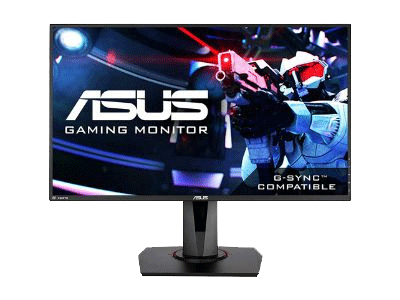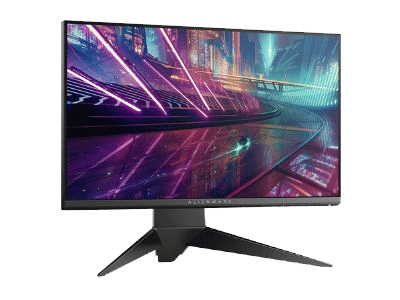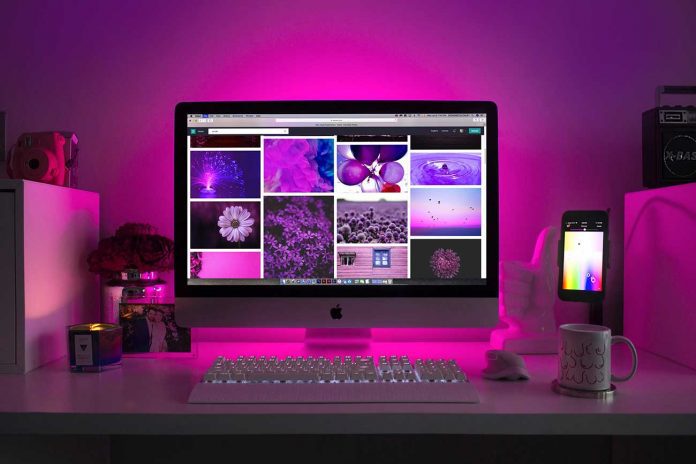Table of Contents
At the point when you buy a cutting-edge graphics card or another screen, the most confounding, vague arrangement task you’re looked with is a decision of interface. HDMI versus DisplayPort: Which link is the best one to use to interface your panel to your PC?
The four recognizable PC-driven showcase interfaces- – VGA, DVI, HDMI, and DisplayPort- – come in different mixes on both video cards and gaming monitors. Frequently, a link for (at least one) of them comes packaged with another screen. You may be enticed just to connect that link and go for it, with no further thought.
Be that as it may, which interface would it be advisable for you to utilize, particularly in case you’re a devoted PC gamer? Does it have any kind of effect?

Summing Up the Big Four
Any cutting-edge video card will have a few display yield connectors, and for the most part among them will be the recognizable, many-stuck DVI. That connector is quick turning into an inheritance one, however. (The periodic top of the line video card nowadays drops it by and large.) Old-school VGA is becoming dim much quicker, and it currently will in general be discovered distinctly on video cards on the low-finish of the GPU chain of command, if by any stretch of the imagination. It’s chiefly an answer these days only for interfacing inheritance screens.
HDMI and DisplayPort are your advanced decisions. A HDMI port (“HDMI” means “Superior quality Multimedia Interface”) is very nearly a given card-side. With most video cards offering at any rate one, if not more. HDMI is utilized principally to associate purchaser gadgets rigging to a TV, be that a game comfort, an A/V beneficiary, or your Roku/Amazon box. Most by far of PC driven screens additionally sport a HDMI input, however the port is increasingly predominant on customer/home screens than on business-arranged showcases.
An advanced video card will in all likelihood include at least one DisplayPort associations, too. On the presentation end of things, DisplayPorts are uncommon on TVs; they’re substantially more prone to show up as one of the association choices on a PC screen.
HDMI: The Details
Numerous PC proprietors aren’t certain whether HDMI or DisplayPort is predominant for gaming- – in the event that they have a decision between them by any means. Further, the waters get muddied by the way that Nvidia’s G-Sync (the designs goliath’s high-invigorate rate innovation that fights tearing) requires DisplayPort, while AMD’s unpleasant proportional, FreeSync, will work over HDMI. Remember, however, that FreeSync just works over HDMI on more up to date screens. Early FreeSync screens required a DisplayPort for their variable-invigorate highlight. What’s a gamer to do?

The most recent HDMI spec (at this composition) is HDMI 2.1, and its capacities are great contrasted with more established computerized show connector tech. This variant of HDMI flaunts a 48Gbps-evaluated transmission capacity, and the spec conveys support for HDR (of differing flavors, contingent upon whether you’re discussing HDMI 2.0a or 2.0b), just as Enhanced Audio Return Channel (eARC) usefulness. (eARC enables TVs to send back sound sign to a collector, if’s a factor in your gaming arrangement.)
Note that some more established (pre-2.0) adaptations of HDMI restricted 4K goals (3840×2160) yield to a top revive pace of simply 30Hz. Therefore, if your video card is attached to that HDMI constraint, and you intend to play PC games at 4K, that is a major negative mark against utilizing HDMI with your current equipment.
AMD Radeon
What could be generally significant for some gamers, however, is HDMI’s capacity to help FreeSync. In the event that you possess a late-model AMD Radeon video card that supports FreeSync, that could be your chief in that spot between the two significant interfaces. (Obviously, your presentation should bolster FreeSync, also, for you to collect any profit.)
With respect to the transfer speed issue we implied before, HDMI 2.1’s data transfer capacity is in fact pushing a 8K show goals at a 120Hz invigorate rate. Truth be told, it’s even able, through some pressure slyness, of an incredible 10240×4320 pixels- – that is, the thing that may in the long run be named “10K.” (obviously, quicker invigorate rates are conceivable at lower goals, if that is your point.)
Keep at the top of the priority list, however, that it will probably be quite a long while. Before presentations of those goals and revive rates will be accessible, especially at sensible costs. For the most part, it’s only pleasant to realize that the most recent HDMI spec has a lot of transfer speed.
DisplayPort: The Details
In the interim, DisplayPort 1.4, the most recent DisplayPort spec, is an expert. Its 32.4Gbps data transmission may be restricted in sheer muscle contrasted with HDMI, however its 3:1 pressure proportion is essentially lossless, so it’s additionally bounty fit for outrageous display undertakings, too.
Also Read: How to Become a Freelance System Administrator
Curiously, in the latest DisplayPort cycle (DisplayPort 1.4), pressure permits DisplayPort to work over a USB Type-C association. instead of the conventional DisplayPort link presented previously. This empowers top notch video (counting 8K and HDR) and, as a little something extra. SuperSpeed USB over an undeniably normal link.
Another intriguing element of DisplayPort is its capacity to control different showcase. Boards: If you’re utilizing USB-C with forefront screens that likewise sport USB-C. You can convey power and picture information over a similar link. Likewise, remember that DisplayPort 1.4 presentations are simply beginning to hit the market. On the off chance that you have a more seasoned model with DisplayPort 1.3 help.
Bottom Line for Gamer’s
Anyway, which of the two bodes well for PC gaming? All things considered, it relies upon what you effectively possess, and what your expectation is. And again, your decision is pre-appointed. On the off chance that you get a GeForce graphics card and a G-Sync screen. You may see that you don’t have a lot (or any) decision in your presentation innovation.
The main connector that presently works with G-Sync is DisplayPort. (More current G-Sync-skilled screens likewise have HDMI ports, yet those ports won’t bolster the G-Sync include.) So, on the off chance that you do have a G-Sync show, you’ll need to adhere to DisplayPort- – in any event for gaming purposes.
In the event that you do have a choice to make- – that is, if both your illustrations card and your PC show have HDMI and DisplayPort ready and accessible – what’s a gamer to do?
All things considered, the present province of HDMI underpins higher hypothetical most extreme goals. In any case, you’d need a beast of a framework. That is, one that most likely doesn’t exist yet (in any event in any sensibly feasible value extend). to mess around at anyplace close to the top transmission capacity and goals that HDMI underpins. What’s more, games you play should explicitly bolster those extraordinary edge rates, also. So, a higher hypothetical goals roof doesn’t settle on HDMI the characteristic right decision for PC gaming, for by far most of people.
Also Read: AOC E1649Fwu LED LCD Monitor
DisplayPort, in the interim
Bodes well on the off chance that you need to game on numerous screens. Yet have only one DisplayPort association accessible (state, in case you’re utilizing a gaming PC with only one DisplayPort out). The port is “splittable” by means of DisplayPort center points, or shows can be daisy-tied. Note.
However, that this works just if the screen has DisplayPort out and bolsters an element called Multi-Stream Transport (MST). Most screens have the last mentioned, however not many have the previous. It’s increasingly run of the mill to run various links from a solitary video card as opposed to daisy-tying.
All else being equivalent, however, for gaming on a solitary showcase at workaday goals and revive rates. You’ll get generally similar outcomes from either interface. Insofar as you’re not clashing with the impediments of G-Sync/FreeSync support. For what it’s worth, the Video Electronics Standards Association (VESA). The overseeing body that formed DisplayPort as a swap for DVI and VGA- – expected it for PC-driven uses. Though HDMI was brought about by a gathering of buyer gadgets organizations in view of TV executions.
objectives of HDMI
In view of its TV-based points, one of the essential introductory highlights/objectives of HDMI was content security. This landed as High-data transfer capacity Digital Content Protection (HDCP). Which was created by Intel to avert replicating of computerized video and sound. You’ll require HDCP backing to utilize most major steaming administrations from your PC, also to watch DVD and Blu-beam plates.
Be that as it may, dread not, as HDCP support is heated in to both DisplayPort and HDMI. For whatever length of time that your illustrations card. Or the incorporated designs inside your CPU- – were made over the most recent quite a long while. You ought to have the option to watch HDCP content over either HDMI or DisplayPort. The two connectors (and the tech inside them) were intended to be correlative, not contending, advancements.
Try not to surrender if your workstation or work area has just a HDMI port. For whatever length of time that your screen isn’t G-Sync or FreeSync empowered. The reality of the situation is that you won’t see a glaring distinction in anything that issues. (outline rate, invigorate rate, idleness, or anything that gamers love to gloat or contend about) in any case.















